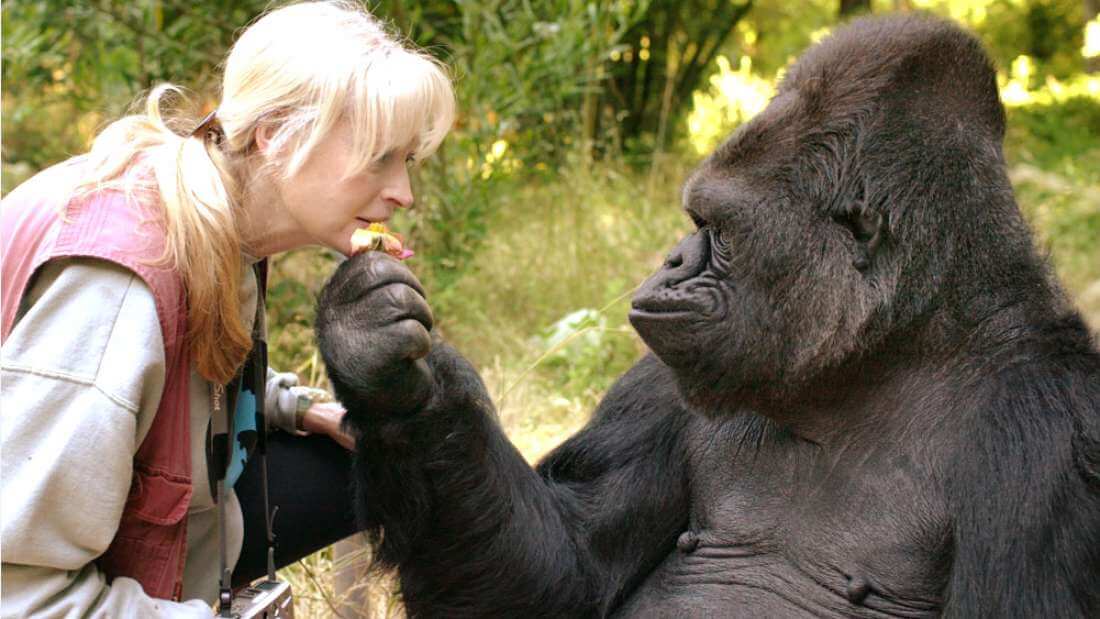
Koko the gorilla, famous for "talking" using sign language, died in her sleep on June 19, 2018, at the age of 46.
“Koko touched the lives of millions as an ambassador for all gorillas and an icon for interspecies communication and empathy,” The Gorilla Foundation said in an announcement of her death. “She was beloved and will be deeply missed.”
At the height of her fame, Koko had twice been a cover girl for National Geographic, met celebrities like Robin Williams, and rocked the scientific establishment with her extraordinary abilities. Not without controversy, the gorilla was famous all over the world as the ape that could “talk,” and she became a prominent icon for the conservation of her species, and wildlife as a whole.
The amazing story of Koko, and how she rose to such global prominence, started back in 1971 when a mother gorilla in the San Francisco Zoo rejected her infant. That gave Stanford University graduate Penny Patterson a special chance to see if her extraordinary – and quite unconventional – idea of teaching a great ape how to talk, was by any means possible.
Over the next several years, Patterson worked with the young gorilla eventually founding Project Koko, and said that Koko could understand and use more than 1,000 different words in American Sign Language. For the following four decades, Patterson not only looked after and taught Koko, but efficiently became her mother, friend, and interpreter.
Through this intimate relationship, Patterson supported that Koko could talk about the future, rhyme, tell jokes, or even lie. However, despite Patterson’s assurances about what Koko was able to do, the scientific community was steadfastly critical of these assertions. That's mainly because Patterson's close relationship with Koko made the woman understandably very defensive of the gorilla, and refused to allow independent researchers access.
Despite this controversy, Koko still captured the curiosity of the world. One of the most notable things to have arisen out of Project Koko is the realization that animals – and great apes in particular – are intelligent, sentient, and emotional individuals. Nowhere is this demonstrated more than through Koko’s fondness for keeping "pet" kittens, one known as All Ball in particular.
With her death, the world lost a genuine icon of nature, but she won't be easily forgotten. Challenging the status quo and how we perceive ourselves, her legacy is one which changed the world of conservation, psychology, and zoology, and is set to continue long into the future.
“The foundation will continue to honor Koko’s legacy and advance our mission with ongoing projects including conservation efforts in Africa, the great ape sanctuary on Maui, and a sign language application featuring Koko for the benefit of both gorillas and children,” The Gorilla Foundation added.
Reference: IFLScience













Oh, that look is fierce and scary, but it's really friendly.
ReplyDeletetemple run 3